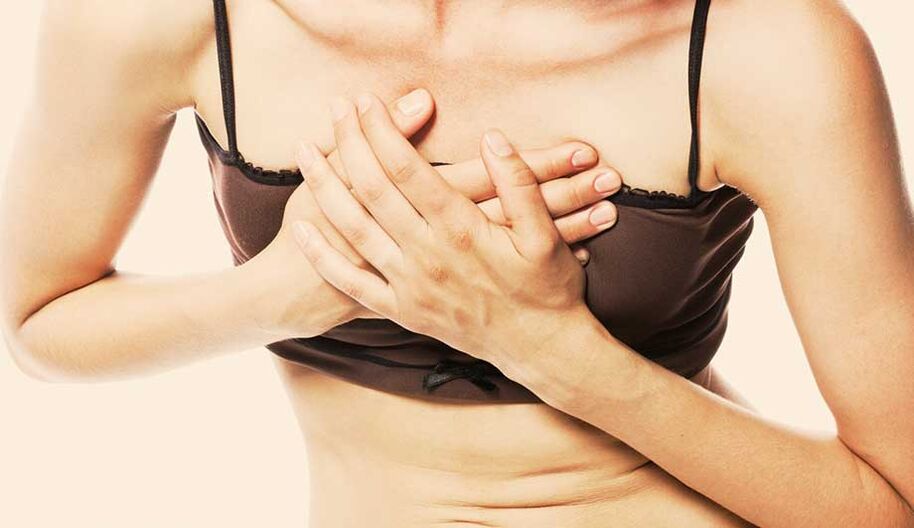Osteoporosis is a very dangerous disease. It occurs imperceptibly, and from mild discomfort develops into serious disorders of the spine, sometimes leading to disability.

Therapists, neurologists, orthopedic physicians, chiropractors and other specialists involved in the treatment of this disease.
Symptoms and feelings of bone necrosis in the chest
Thoracic spinal tumors are less common than those of the spine or lumbar spine. The thoracic vertebrae are less mobile and more protected. The disease is complicated because the symptoms are difficult to identify, which can then lead to a number of other illnesses.
One of the main reasons for the appearance of osteonecrosis of the thoracic region is the presence of scoliosis in humans. With curvature of the spine, pressure on the vertebrae increases and there is displacement and loss of the disc from the spine. The pain that occurs with this disease is indicated by the fact that changes occur in the vertebrae, the metabolism and blood supply are interrupted. This disease mainly affects people with sedentary lifestyles, office workers, drivers, and students.
With thoracic necrosis, the symptoms and feelings are divided into the main pain syndromes: back pain and back pain. Back pain is a chronic, mild, and unpleasant, chronic pain. Dorsago is a sudden, sharp pain. It happens when a person stays in a certain position for a long time and changes it dramatically. Shortness of breath may occur, become short of breath, and poorly controlled muscles.
Degenerative disc disease: symptoms and feelings are typical and atypical
Bone tumors of the thoracic region, like any other disease, have a number of characteristic features. List of typical symptoms:
- increased pain sensation when inhaling, turning, lifting arms;
- The pain begins in one place, and then quickly spreads to the entire chest area. Shortness of breath. The patient is forced to find a comfortable position. Intercostal pain appears;
- muscles are very tight, periodic spasms occur;
- The precursor to intercostal pain are recurrent pain, discomfort in the back and chest that occurs with walking or movement;
- Pain syndrome increases at night, by morning it can be completely relieved. It also becomes more pronounced during hypothermia.
In thoracic necrosis, symptoms and sensations are characteristic of other diseases. Such symptoms are called atypical. Including:
- Painful sensations similar to diseases of the cardiovascular system. When the drug does not improve, it may even worsen the condition. In addition, with the electrocardiogram, no changes were observed;
- For women in the acute phase of the disease development, soreness of the mammary glands is characteristic. You can rule this out by seeing a breast specialist;
- Patients sometimes complain of pain sensations similar to those in gastritis, ulcers, and gastrointestinal diseases. But, unlike these diseases, with osteonecrosis, the pain increases during times of electrical load, not during meals;
- disorders of the urinary and reproductive system;
- some patients have difficulty in the swallowing reflex, the feeling of "being caught in the throat".
With osteonecrosis of the chest, immediate treatment is required and self-medication is unacceptable. This can lead to the patient's condition worsening, and later even disability. Specialists can identify typical and atypical symptoms of the disease. Qualified doctors diagnose thoracic tumors with modern equipment and treat with the latest effective methods.
Bone tumors in the chest: symptoms and treatment
The hospital uses the best programs and methods to treat bone necrosis in the chest. The method of taking medications helps to eliminate the inflammatory process and relieve pain. The main method of dealing with bone necrosis is to use chondroprotectors for a long time. They restore the cartilage of the disc, their elasticity. For patients in hospital, the prerequisite for treatment is exercise therapy to strengthen the muscle frame - ligaments. Used muscle relaxants (relieves muscle spasms), nonsteroidal anti-inflammatory drugs.
In order to maintain overall balance, improve metabolism in the body, proper nutrition is necessary. The hospital offers the services of a registered dietitian and inpatient department, where it is much easier to maintain a healthy lifestyle during recovery than at home.
Among the additional treatments used:
- Acupuncture;
- Massage;
- physical therapy;
- manual therapy;
- vacuum therapy.

























